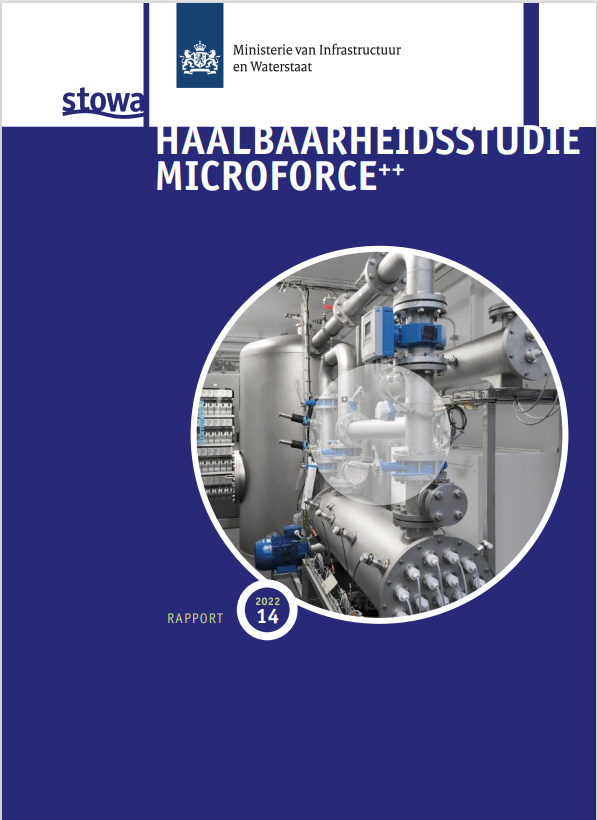Feasibility study Microforce++
As part of the Innovation Program Micropollutants from Wastewater (IPMV), a feasibility study was conducted on Microforce++, a technology that combines ozonation and biological oxidation. The performance of MicroForce++ was compared with the reference technology: a downstream ozone dosing with a sand filter. Based on the feasibility study, Microforce++ outperforms the reference.
The Innovation Program Micropollutants from WWTP Wastewater (IPMV) is an initiative of the Ministry of Infrastructure and Water Management (IenW), the Foundation for Applied Water Management Research (STOWA), and the Dutch Water Boards to accelerate the search for these innovative solutions.
MicroForce++ combines ozonation and biological oxidation to remove organic micropollutants (e.g. pharmaceutical residues) from WWTP effluent in a sustainable and cost-effective way. The MicroForce++ process consists of two consecutive, series-connected O3/Bio reactors, with a specific ozone dose being used in each O3/Bio reactor. This converts non-biodegradable molecules into smaller, biodegradable components that are simultaneously mineralized in a sustainable, biological way using biofilm-on-carrier technology.
Based on a feasibility study, this innovative technology was evaluated on various criteria, namely the removal efficiency of guide substances, the CO2 footprint, TCO and the applicability at WWTPs in the Netherlands.
